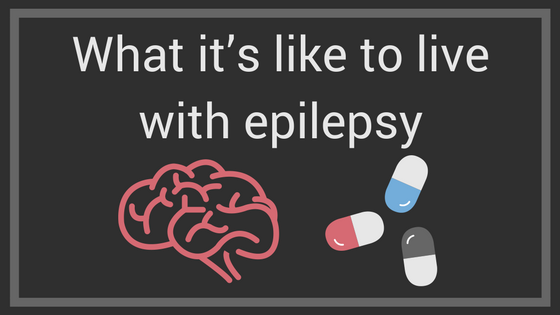Maxime Julien
The average person believes epilepsy is when a person is shaking uncontrollably. However, there is more to epilepsy than uncontrollable shaking. I know this because six years ago I was diagnosed as an epileptic with tonic-clonic seizures.
After my diagnosis, I had many unanswered questions that led me to seek more information about my medical condition. I researched the definition and symptoms of epilepsy to better understand the different types. I wanted to know the reason behind the many tests and how I could cope with this disease in the future.
Epilepsy is a neurological disease involving epileptic seizures. These seizures happen when the brain is subjected to an excessive amount of electricity coming from the neurons. In order to be diagnosed with epilepsy, someone would first have to have a minimum of two seizures within a 24-hour interval or more. For example, I had four seizures within four months and was diagnosed epileptic after the third one. I sought the help of a neurologist who is a medical practitioner with a specialization in brain functions. I was told that it was not unusual for an 18-year-old to have epilepsy since the brain is still developing. He determined the type of epilepsy I had and provided me with more information by using two medical diagnostic tools.
The first tool was the computerized tomography (CT) scan. This is a box-like x-ray machine with a hole in the middle. The patient lies down on a narrow examination table with a little mattress on top. The examination table moves in and out of the hole to construct a three-dimensional image of the brain. The neurologist is then able to see the area of the brain that is causing the seizures.
The electroencephalogram (EEG) test is also frequently used to reveal irregular electrical activity in the brain. The EEG test tracks the brain’s electrical activity through the placement of electrodes, which are directly wired to a computer, on the scalp to record the brain wave patterns. An EEG is often recommended for epileptic patients because it gives live results from the different areas of the brain that are stimulated by a series of specific tests. It will usually help to uncover the trigger of the seizures because the neurologist is able to identify the region of the brain that is affected. It is crucial to find the trigger in order to provide the appropriate treatment to prevent future seizures.
The treatment generally involves medication with a calming (inhibitory) effect to maintain a normal level of electrical activity in the brain. There is a risk of seizures while finding the right drug and dosage. The neurologist will often establish health related boundaries with the patient, such as avoiding the consumption of alcohol or illegal drugs, to prevent a potential seizure. The neurologist will likely encourage the patient to live an active lifestyle to reduce stress, which is a main trigger for seizures. Many epileptics are able to live a normal lifestyle if they follow the advice of their neurologist and keep up with their treatments. For example, my tonic-clonic seizures were related to my anxiety and an unsteady sleep cycle. He recommended that I include sports in my daily routine to lessen my level of anxiety and to maintain a healthy weight. I followed his recommendations and it has been two years since my last seizure.
Unfortunately, there is a small portion of epileptics who experience three or more seizures on a daily basis. Medications have limited effects on their condition and some patients do not respond to treatment. There is on-going research about potential surgeries for specific types of epilepsy to help these epileptics. Also, there are dogs that are trained to alert the person of an upcoming seizure as well as making those around aware of the emergency.
Being epileptic is not something I am ashamed of, because it is a part of me. I learned to control it and I am now aware of my body’s needs. Everyone is unique in his or her own way. Epilepsy should not be a barrier to be yourself or to live the way you want.
For more information visit the Epilepsy Foundation website.





